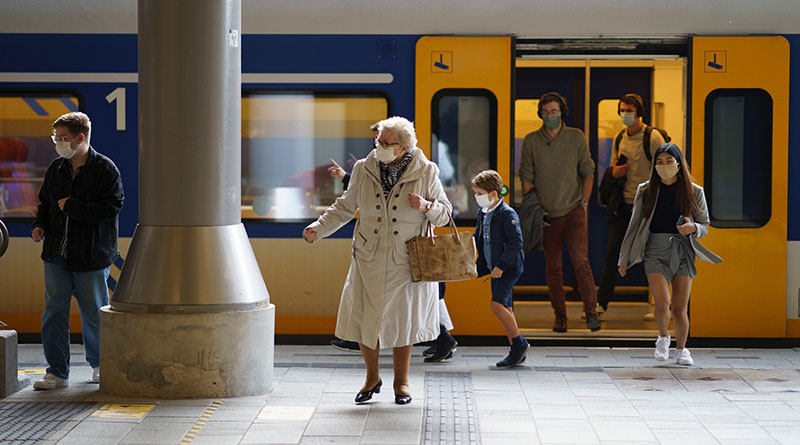Transit-Oriented Development for Older Adults: A Survey of Current Practices Among Transit Agencies and Local Governments in the US. (2021)
Michael Duncan, Yazmin Valdez Torres, Kristin Gladwin, Mark Horner, Brittany Wood, Florida State University
Recently Florida State University researchers completed surveys of transit agencies and municipalities to learn how these entities address the needs of older adults through their transit-oriented development (TOD) efforts. The researchers found survey respondents to be actively engaged in the promotion of TODs and transportation mobility for their aging populations. However, the agencies and municipalities have not coordinated between the two activities. To address this gap, the authors recommend designing policies that encourage TODs that include the elderly, who are often not considered in the planning and decision-making process.
Transit-oriented development has been thoroughly discussed as a means to reduce the need to drive. Moreover, it can improve access for people of all ages and abilities. The majority of older people live in auto-centric, suburban areas. These low-density areas pose a challenge for aging, post-driving populations. For those who cannot or do not drive, the promotion of pedestrian and transit uses and creation of good walking environments can help non-drivers retain mobility independence—an important social equity impact supported by TOD.
The researchers asked three key questions:
- How is TOD for older adults being considered now?
- What are the perceived barriers to planning TOD for older adults, as identified by practitioners?
- What projects, if any, are practitioners aware of in their jurisdiction that actively meet these needs?
To answer these questions, the researchers selected two cities from each Combined Statistical Area (CSA) across the U.S. with at least one fixed guideway station. They then filtered by state, and randomly selected one of the two cities. Ultimately, they invited 57 cities to participate in the online survey. Of these, 15 transit agencies and 31 municipalities responded to the survey.
A majority of the cities and transit agencies that responded indicated that they were working to improve TOD, as well as promoting transportation mobility for older people. However, all but one shared that advancing the combined efforts of TOD for aging populations was not a specific goal.
The Greater Cleveland Regional Transit Authority was the sole respondent to provide a detailed policy that supports this goal. The agency shared its four-step plan to: target land use changes that allow for multi-unit dwellings; work to locate senior housing in TOD zones or close to transit corridors; build complete streets with wider sidewalks and shorter block lengths; and design marketing outreach for older adults to inform them of mobility options.
Regarding perceived barriers to building more TODs for seniors, a plurality of respondents indicated market issues, such as the high cost of building TODs, and developers’ reluctance to construct without a high rate of return. Respondents also noted low-density development and an emphasis on “non-traditional” households, such as Millennials, as other obstacles.
Finally, respondents offered a few examples of market-based TODs that cater to older adults. Respondents in Utah and San Diego identified concentrated aging populations near transit stations, but suggested that these enclaves occurred “naturally,” or without policy intervention. In Utah, a cluster of senior residences opened after the opening of a new rail line, but not as a result of a concerted effort by the transit agency. In San Diego, another “organic” older-adult-oriented TOD was attributed, not to intentional planning, but to the location of a luxury high-rise near a trolley stop.
The issues examined by the researchers are important and will remain so for the foreseeable future. The aging population is finding cities unprepared to meet their needs. By 2030, one in five Americans are projected to be 65 or older, and, as they phase out of driving, may become trapped in low-density environments lacking mobility options. TOD has the potential to change this future, as long as older adults are a part of the conversation. Based on this research, municipalities and transit agencies have not given enough consideration to older adults in their TOD efforts. The researchers identified the hurdles articulated by those surveyed—affordability, the housing market, and the need for nearby amenities catering to seniors—as challenges to providing TOD for older adults. But, according to the Florida State researchers, proper planning and policymaking could surmount difficulties, given adequate time and resources. The authors recommend that more time and resources be dedicated to promoting transit-oriented development that includes the growing share of older people in the United States.

